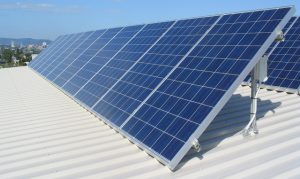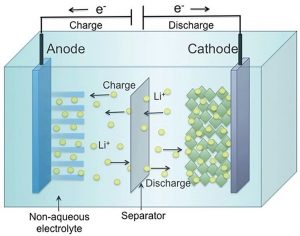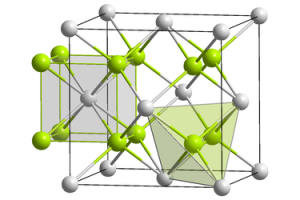Introduction
Fundamental Properties and Production of Lithium Selenide
Applications of Lithium Selenide in Various Industries
Lithium selenide’s unique properties make it an invaluable material across multiple industrial domains, from renewable energy to advanced manufacturing processes. This section delves into the key applications of lithium selenide, illustrating its versatility and importance in technological advancements.
Battery Technology and Energy Storage
In the realm of battery technology, lithium selenide plays a transformative role. Its exceptional ionic conductivity and electrochemical stability enhance the performance of lithium batteries, contributing to higher energy densities and longer life cycles. This makes it a promising material for electric vehicles (EVs) and grid storage solutions, where efficiency and durability are paramount.
Photovoltaic Cells and Solar Energy
Lithium selenide’s application extends to the solar energy sector, where its inclusion in photovoltaic (PV) cells can significantly improve their efficiency. By serving as a p-type semiconductor layer in thin-film solar cells, lithium selenide helps optimize the conversion of solar energy into electricity, paving the way for more sustainable energy solutions.

Optical Fibers and Glass Manufacturing
The use of lithium selenide in optical fibers and glass manufacturing highlights its versatility. Its ability to alter the refractive index of glass and fibers enhances the transmission of light, which is crucial for telecommunications and high-speed internet technologies. Additionally, its thermal stability improves the durability of optical components, making them more resistant to environmental stressors.
Medical Technologies and Healthcare
Emerging applications of lithium selenide in the medical and healthcare sectors underscore its innovation potential. Research into its use in drug delivery systems suggests that lithium selenide could enable more efficient and targeted therapies, particularly for diseases requiring precise dosing and release mechanisms. Furthermore, its applications in medical imaging technologies could lead to advancements in diagnostic tools, offering clearer and more accurate imaging options.
Challenges and Future Perspectives
Despite its wide-ranging applications, the use of lithium selenide is not without challenges. Issues related to cost, material processing, and environmental impact require ongoing research and innovation. The development of sustainable synthesis methods, recycling processes, and novel applications of lithium selenide continues to be a focus for researchers aiming to maximize its potential while minimizing its drawbacks.
The Critical Role of Lithium Selenide Sputtering Targets
Introduction to Sputtering Targets and Thin Film Deposition
The use of sputtering targets in thin film deposition is a cornerstone of modern material science and industrial manufacturing processes. Sputtering is a technique used to create thin films of materials on substrates by bombarding a source material, known as a sputtering target, with high-energy particles. This process is pivotal in the fabrication of semiconductor devices, coatings, and various electronic components. Lithium selenide sputtering targets, with their specific properties, play an essential role in depositing high-quality thin films for a range of applications.
Benefits of Lithium Selenide in Sputtering Processes
Lithium selenide stands out as a sputtering target material due to its excellent electrical and optical properties. When used as a target, it enables the deposition of thin films that inherit its desirable characteristics, such as high ionic conductivity and stability. These films are crucial in the development of batteries, photovoltaics, and electronic devices, where performance and reliability are key. Additionally, the uniformity and purity of the films deposited using lithium selenide sputtering targets are superior, leading to enhanced device efficiency and longevity.
Applications of Lithium Selenide Sputtering Targets
The applications of lithium selenide sputtering targets are diverse and impactful. In the realm of electronics, they are used to create thin films for lithium-ion battery electrodes, contributing to higher energy density and faster charging times. In the field of photovoltaics, lithium selenide films improve the efficiency and durability of solar cells, supporting the growth of renewable energy technologies. Furthermore, the unique optical properties of lithium selenide make it suitable for thin-film coatings in optical devices, enhancing their performance and functionality.

Manufacturing and Challenges
Producing lithium selenide sputtering targets involves complex processes to ensure high purity and appropriate physical properties. The manufacturing process must carefully control the composition and microstructure of the target material to achieve optimal sputtering performance. Despite these capabilities, the production and use of lithium selenide sputtering targets face challenges, including the cost of raw materials, the need for specialized handling due to the material’s reactivity, and environmental considerations associated with the disposal and recycling of used targets.
Future Directions and Research
As we stand on the brink of technological advancements, lithium selenide’s journey is far from over. Its versatility and unique properties have only begun to be harnessed, with future directions promising even greater innovations and applications. This section explores the potential growth areas for lithium selenide, particularly in emerging technologies and research.
Nanotechnology and Quantum Computing
One of the most exciting prospects for lithium selenide lies in the realm of nanotechnology. Due to its excellent electrical properties and ionic conductivity, lithium selenide could play a pivotal role in the development of nano-scale devices, including sensors, transistors, and energy storage systems. These applications benefit from the material’s ability to perform under the unique demands of nanoscale engineering, potentially leading to breakthroughs in electronics and medicine.
In quantum computing, lithium selenide’s properties might be exploited to create quantum dots and other quantum materials, serving as the building blocks for quantum processors. The unique behavior of lithium selenide at the quantum level, particularly its electron and phonon transport properties, could facilitate the development of highly efficient quantum computing systems, heralding a new era of computational power.
Advanced Energy Systems
The ongoing quest for sustainable and efficient energy solutions continues to spotlight lithium selenide, especially in solar energy conversion and next-generation battery technologies. Researchers are exploring ways to enhance the efficiency of photovoltaic cells using lithium selenide-based materials, aiming to capture a broader spectrum of solar radiation and convert it into electricity more effectively.
For battery technology, lithium selenide offers avenues for developing ultra-high-capacity batteries with faster charging times and longer lifespans. Innovations in solid-state battery designs, leveraging lithium selenide’s stability and conductivity, could revolutionize energy storage, making renewable energy sources more viable and accessible.
Environmental Sustainability
As the applications of lithium selenide expand, its environmental impact becomes a critical consideration. Future research is directed not only at maximizing the material’s efficiency and utility but also at ensuring its production, usage, and disposal are sustainable. Efforts to develop eco-friendly synthesis methods, improve recyclability, and minimize toxic byproducts are key to integrating lithium selenide into a sustainable technological future.
Collaborative Research and Development
The path forward for lithium selenide involves collaborative efforts across disciplines and industries. Partnerships between academic institutions, research organizations, and industry leaders are essential to unlock the full potential of lithium selenide. By combining expertise in materials science, engineering, environmental studies, and beyond, the scientific community can address the challenges associated with lithium selenide and explore new horizons for its application.
Conclusion
Lithium selenide’s role in modern technology is marked by its impressive versatility and potential for innovation. From enhancing energy storage solutions to enabling advancements in nanotechnology and quantum computing, the applications of lithium selenide are vast and varied. As we look to the future, the continued exploration of this material’s properties and applications is essential for driving progress across multiple technological fronts. With ongoing research and development, lithium selenide is set to remain at the forefront of materials science, contributing to the advancements that will shape our technological landscape for years to come.
Click to Inquiry Lithium Selenide Sputtering Targets





